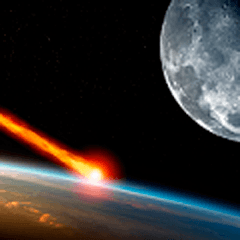Earth & Space Science 7B
$795.00
Description
Course Description
In the second semester study zeros in closer to home: Earth science. Yet, the coursework is uniquely integrated and applied to disciplines of study outside of Earth science. Starting with the Earth’s interior students study rocks and minerals, volcanoes, earthquakes, undersea ridges, trenches and mountains and how the study of Earth’s geologic history helps explain these phenomena.
On the Earth’s surface students study weathering, soil and erosion as well as water in all its forms the water cycle, oceans and ocean currents.
Above the Earth they will study the atmosphere: its composition, air pressure and air movement. This knowledge is then applied to lessons on how human populations are affected by natural resources, renewable and non-renewable, both on and inside the Earth.
These lessons are integrated with lessons that discuss how humans and living organisms are affected by air and water pollution, acid rain, changes in the ozone layer and how these conditions influence biodiversity, habitat loss and species survival.
The course is capped off by lessons that take an in-depth look at the process of technology design giving students a look at of how scientists and technical designers work together to achieve common goals.
Lastly, students are taught about the kinds of professions that currently exist in the science and technology fields and learn about the necessary academic preparation needed to gain employment in these branches of study.
Major Concepts
- The Earth’s geologic structure, internally and externally, is a dynamic, constantly changing system impelled by forces of gravity, pressure, heat convection and the Earth’s rotational force creating volcanism and plate tectonics, mountain formation, ocean trenches and earthquakes.
- Water is a significant feature of Earth covering 75% of the planet’s surface. The water cycle plays a essential role supporting plant and animal life. Solar warming of oceans and lakes affects air movement, weather and ocean currents. Oceans’ effect on air temperatures and humidity levels play a major role in Earth’s warming and cooling trends over long periods of time.
- The composition of Earth’s atmosphere gone through many changes over billions of year which scientists have analyzed from evidence seen in ancient geologic samples. Shorter time scales have seen an increase in carbon dioxide, ozone, nitrous oxide and ozone levels that raise concern regarding Earth’s warming trends and damage to Earth’s protective ozone layer raising concerns as to how this will affect human and animal life.
- Natural resources, such as water, plant life, animal life, metals and minerals, and energy resources, e.g. petroleum, solar, geothermal, hydroelectric are categorized as renewable and non-renewable and viewed in context with human population growth, biodiversity, species loss and species survival.
- Weathering and soil erosion caused by wind, freezing, ice and water impelled by gravity affect the tearing down of landscapes and rock formations and the building up of ocean floors, river and lake bottoms.
- Scientific discoveries and technological advancement work together to achieve a common goal. Technology can be the application of scientific principles and scientists use technology to make new discoveries.





